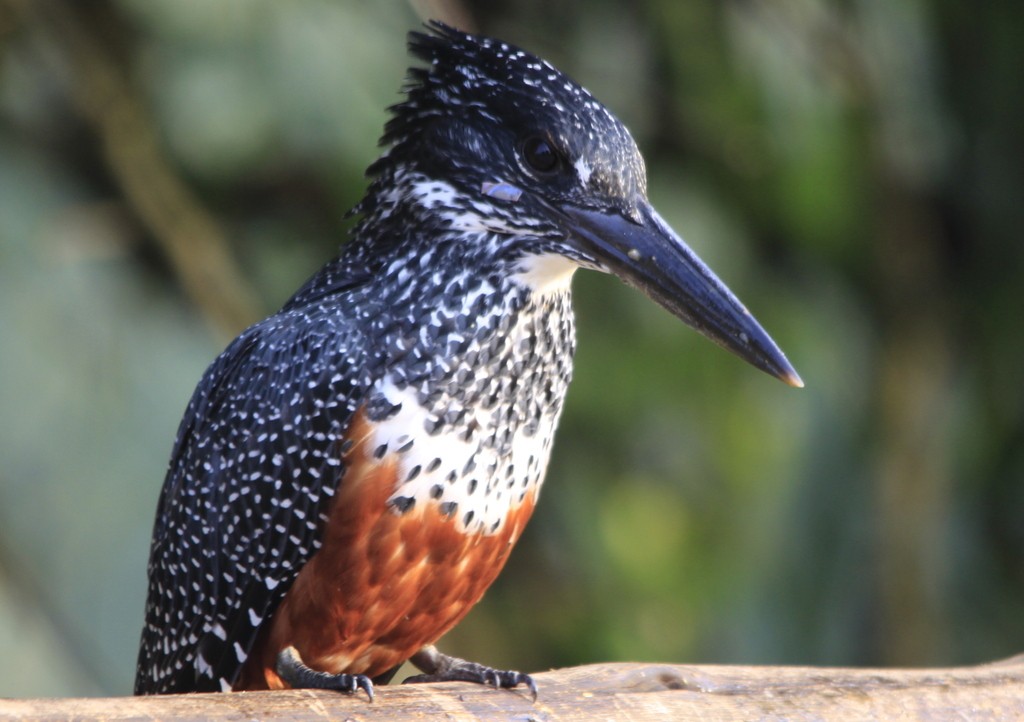Giant Kingfisher
A species of Large Crested Kingfishers Scientific name : Megaceryle maxima Genus : Large Crested Kingfishers
Giant Kingfisher, A species of Large Crested Kingfishers
Botanical name: Megaceryle maxima
Genus: Large Crested Kingfishers
Content
Description People often ask General Info
Description
The giant kingfisher is 42–46 cm (16.5–18 in) long, with a large shaggy crest, a large black bill and fine white spots on black upperparts. The male has a chestnut breast band and otherwise white underparts with dark flank barring. The female has a white-spotted black breast band and a chestnut belly. The forest race M. m. gigantea is darker, less spotted above, and more barred below than the nominate race, but the two forms intergrade along the forest edge zone. The call is a loud wak wak wak. 
Size
46 cm
Colors
Brown
Black
Gray
White
Life Expectancy
6-14 years
Nest Placement
Cavity
Feeding Habits
Giant Kingfisher predominantly consumes crabs, fish, and frogs, skillfully captured through perch-diving techniques, highlighting its specialized hunting behavior and dietary preferences.
Habitat
Giant Kingfisher thrives mainly in varied freshwater and coastal environments such as large rivers, streams, lakes, and coastal lagoons, often up to altitudes of 1600 m. This bird species predominantly inhabits regions with perennial bodies of water and adjacent wooded areas, found within forested and savannah landscapes. Marginal woody vegetation is a preferred feature of its habitat, with occasional presence in mangroves, estuaries, and near shores.
Dite type
Piscivorous
People often ask
General Info
Feeding Habits
Bird food type
Species Status
Not globally threatened.
